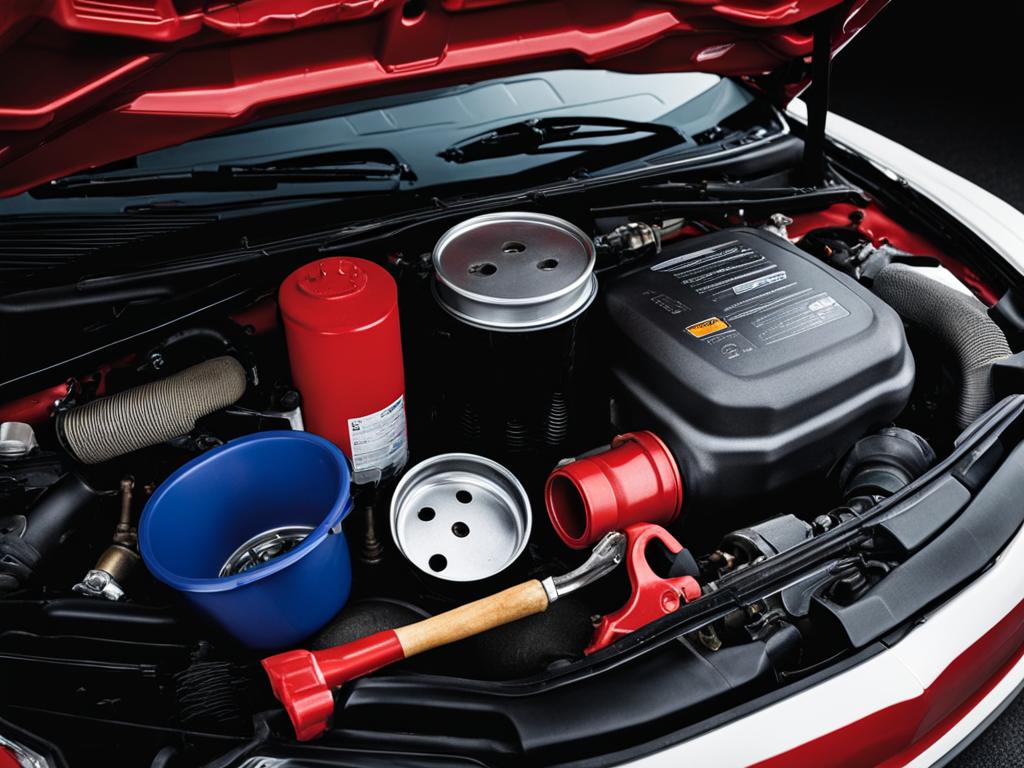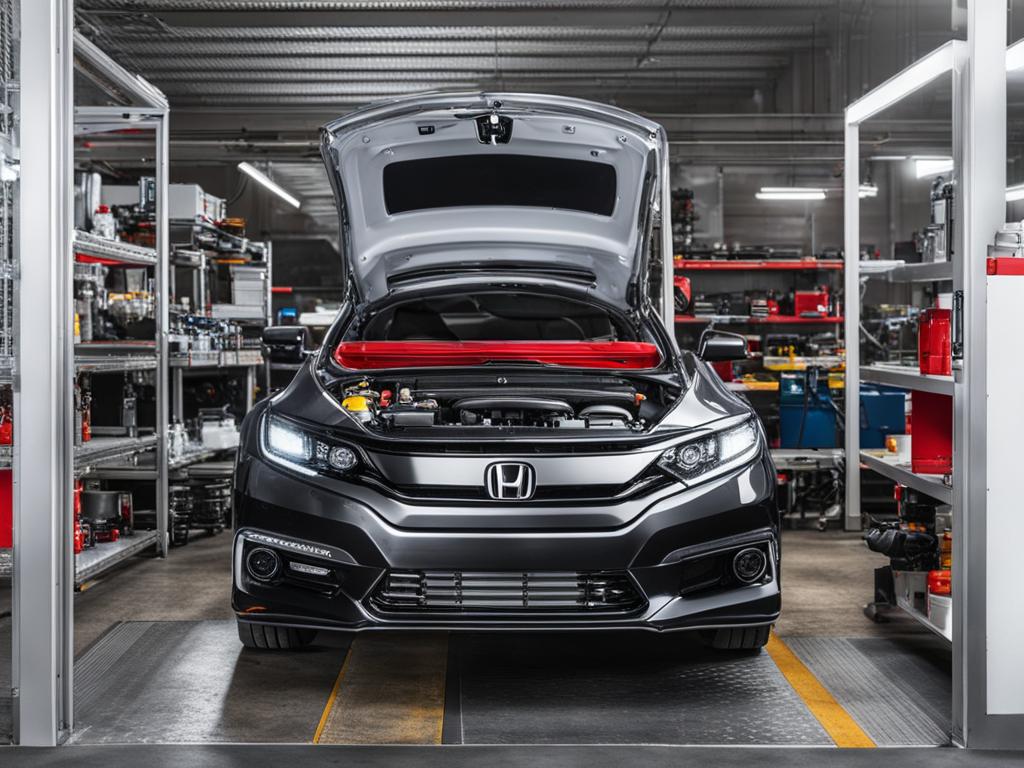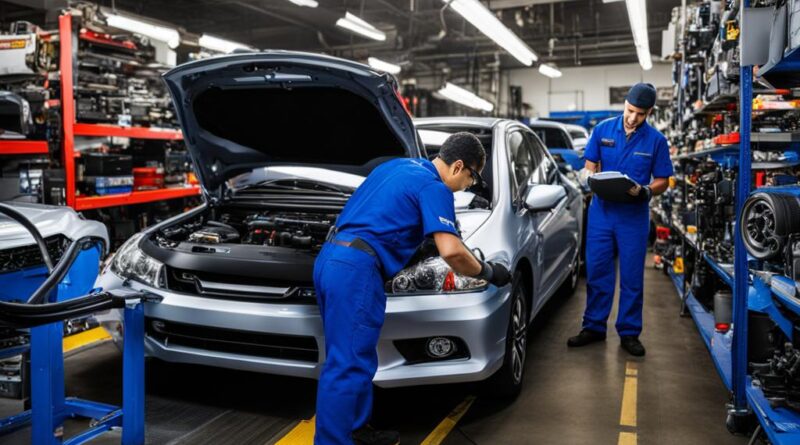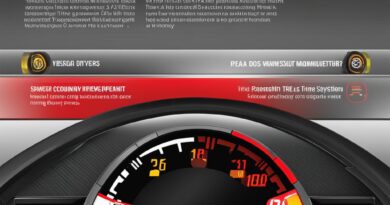Honda B1 Service Explained: Key Maintenance Info
If you own a Honda vehicle, you may have come across the term “Honda B1 service” in your owner’s manual or heard it mentioned by your mechanic. But what exactly is the Honda B1 service and why is it important? Let’s dive in and explore.
The Honda B1 service is part of Honda’s Maintenance Minder system, a sophisticated technology designed to ensure that your vehicle receives the necessary scheduled maintenance on time. It is a comprehensive service that includes several key maintenance tasks to keep your Honda running smoothly and efficiently.
Key Takeaways:
- The Honda B1 service is an essential part of maintaining your Honda vehicle.
- The B1 service includes an oil and filter change, mechanical inspection, fluid check and top-up, and tire rotation.
- It is typically recommended to be performed every 12 months or as indicated by the Maintenance Minder system.
- The B1 service helps ensure the longevity and safety of your Honda.
- Following the recommended service schedule is crucial in maintaining the performance of your vehicle.
What Does the Honda B1 Service Include?
The Honda B1 service is a comprehensive maintenance package designed to keep your Honda vehicle in optimal condition. It includes a range of essential tasks to ensure proper functioning and longevity of your vehicle.
Service Checklist
The Honda B1 service checklist consists of the following key components:
- Oil and Filter Change: An oil and filter change is performed to remove old, contaminated oil and replace it with fresh oil to keep your engine running smoothly.
- Mechanical Inspection: A thorough mechanical inspection is carried out to examine critical components like brakes, suspension, steering, and more. This helps identify any potential issues and ensures your vehicle’s safety.
- Fluid Check and Top-up: All vital fluids, including coolant, brake fluid, power steering fluid, and transmission fluid, are checked for proper levels and topped up if necessary to maintain optimum performance.
- Tire Rotation: Tire rotation involves moving each tire to a different position on your vehicle. This helps ensure even tire wear, extends tire life, and promotes better handling and fuel efficiency.
The Honda B1 service is typically recommended to be performed every 12 months or as indicated by the Maintenance Minder system. Adhering to the recommended service interval ensures that your vehicle receives the necessary maintenance on time, reducing the risk of costly repairs in the future. Consult your vehicle’s owner’s manual or contact your local Honda dealership for specific service requirements based on your model and year.
| Service Component | Frequency |
|---|---|
| Oil and Filter Change | Every 12 months or as indicated by Maintenance Minder system |
| Mechanical Inspection | Every 12 months or as indicated by Maintenance Minder system |
| Fluid Check and Top-up | Every 12 months or as indicated by Maintenance Minder system |
| Tire Rotation | Every 12 months or as indicated by Maintenance Minder system |
Regular maintenance, including the Honda B1 service, is crucial to keep your Honda vehicle running smoothly and efficiently. It not only helps maintain the performance and reliability of your vehicle but also ensures your safety and minimizes unexpected breakdowns. Don’t neglect your vehicle’s maintenance needs, and schedule your Honda B1 service according to the recommended interval.
Oil and Filter Change
The B1 service for your Honda vehicle includes an essential oil and filter change. Unlike traditional maintenance schedules based solely on mileage, this service is determined by the engine operating conditions. It is highly recommended to have the oil and filter changed at least every 12 months, regardless of the Maintenance Minder message displayed on your vehicle.
Regular oil and filter changes are crucial to ensuring the proper functioning and longevity of your Honda’s engine. Fresh oil helps lubricate the moving parts, reducing friction and heat buildup, while the filter traps contaminants and debris, preventing them from circulating in the engine. By adhering to the B1 service schedule, you can help maintain optimal engine performance and efficiency.
Why is Honda B1 maintenance important?
Honda B1 maintenance, which includes the oil and filter change, plays a critical role in preserving the health of your vehicle’s engine. Over time, oil can become contaminated with dirt, debris, and sludge, reducing its effectiveness and potentially causing damage to the engine. By regularly replacing the oil and filter, you can prevent these harmful particles from causing unnecessary wear and tear on vital engine components.
In addition to promoting engine longevity, Honda B1 maintenance also allows for the early detection of potential issues. During the oil and filter change, a qualified technician can assess the condition of the oil and inspect the filter for any signs of abnormal wear or debris accumulation. This inspection can help identify underlying problems before they escalate, potentially saving you from costly repairs down the line.
Regular oil and filter changes are crucial to ensuring the proper functioning and longevity of your Honda’s engine.
| Benefits of Honda B1 Maintenance |
|---|
| Improved engine performance and fuel efficiency |
| Prevention of engine damage from dirty or insufficient oil |
| Early detection of potential issues |
| Extended engine life |
By staying up to date with your Honda B1 maintenance, you can enjoy the peace of mind that comes with knowing your engine is well cared for. Don’t neglect this crucial service and keep your Honda running smoothly for years to come.

Mechanical Inspection
The B1 service includes a thorough mechanical inspection, ensuring that all necessary components of your Honda vehicle are in optimal condition. This comprehensive inspection covers various critical areas, including:
- Brake pads and rotors: Our technicians carefully examine the condition of your brake pads and rotors, ensuring they meet Honda’s safety standards.
- Brake fluid: We check the level and quality of your brake fluid, as well as its ability to effectively transmit hydraulic pressure to your braking system.
- Hoses: Our team inspects the hoses in your vehicle, identifying any signs of wear, leaks, or potential issues that may affect the performance of your Honda.
- Steering and suspension components: We thoroughly examine the steering and suspension system for any wear or damage, ensuring your vehicle maintains its stability and responsiveness.
- Driveshaft boots: Driveshaft boots protect your vehicle’s driveshaft from contaminants and damage. We inspect them to prevent any potential issues that may compromise the overall performance of your Honda.
- Exhaust system: Our technicians inspect your exhaust system, checking for leaks, wear, or any other abnormalities that may affect the efficiency and emissions of your Honda.
- Fuel lines and connections: We ensure that your fuel lines and connections are secure, free from leaks, and functioning properly to maintain the smooth operation of your vehicle.
By conducting a thorough mechanical inspection during the B1 service, we can identify any potential issues before they become major problems. This proactive approach helps to ensure the safety, reliability, and longevity of your Honda vehicle.
Trust our experienced technicians to meticulously inspect your Honda during the B1 service. Your satisfaction and safety are our top priorities.
Stay tuned for the next section, where we will discuss the fluid check and top-up during the Honda B1 service.
Fluid Check and Top-up
During the Honda B1 service, all fluids in your vehicle are carefully inspected to ensure they are in optimal condition. The technician will check the levels and quality of various fluids, such as engine oil, transmission fluid, coolant, brake fluid, and power steering fluid. If any of the fluids are found to be low or dirty, they will be topped up or replaced, as necessary, to maintain the proper functioning of your Honda vehicle.
Your vehicle’s fluids play a critical role in its overall performance and longevity. Engine oil, for example, lubricates the moving parts of the engine, while transmission fluid ensures smooth gear shifts. Coolant helps regulate the engine’s temperature, preventing overheating, and brake fluid allows for safe and effective braking. Maintaining the proper fluid levels and quality is essential for the optimal operation of your vehicle.
Replacing Engine Coolant and Transmission Fluid
In some cases, the technician may recommend replacing the engine coolant or transmission fluid if they are found to be dirty or contaminated. Engine coolant is responsible for cooling the engine and preventing it from overheating, while transmission fluid ensures smooth gear changes in automatic transmissions. Over time, these fluids can become contaminated with debris and lose their effectiveness. Replacing them as part of the B1 service helps to maintain the performance and longevity of your vehicle’s engine and transmission.
It’s important to note that the cost of the Honda B1 service may vary depending on the dealership or service center. However, the cost typically includes the fluid check and top-up, along with other maintenance tasks such as an oil change, tire rotation, and brake inspection. On average, the cost of the B1 service may be around $140, but it’s best to check with your local Honda dealership for accurate pricing information.

Regularly checking and topping up your vehicle’s fluids, as recommended by Honda’s Maintenance Minder system, can help prevent unnecessary wear and potential damage to critical components. It’s a proactive measure that ensures the continued reliability and smooth operation of your Honda vehicle. By addressing fluid levels and quality during the B1 service, you can maintain the optimal performance and longevity of your Honda for years to come.
Tire Rotation
The ‘1’ part of the B1 service refers to tire rotation. This involves rotating the tires to ensure even wear and extend tire life. Regular tire rotation can help reduce the cost of ownership. By distributing the wear evenly across all four tires, you can maximize their lifespan and avoid the need for premature replacement.

Rotating the tires also has the added benefit of improving vehicle performance and safety. As tires wear, their grip and traction capabilities may decrease, potentially compromising your vehicle’s handling and braking. By rotating the tires, you ensure that all tires experience a similar level of wear, maintaining consistent performance.
Honda B1 Service Cost and Frequency
The cost of the Honda B1 service can vary depending on the dealership or service center. According to one source, the cost may be around $140, which includes a tire rotation, brake inspection, oil change, and other inspections. The service is typically performed every 12 months or as indicated by the Maintenance Minder system.
The Honda B1 service is an important investment in the maintenance of your Honda vehicle. By adhering to the recommended service schedule, you can help ensure the longevity and safety of your vehicle. Regular servicing not only enhances the overall performance and reliability but also helps prevent potential issues before they become major problems.
During the B1 service, technicians thoroughly inspect your vehicle, check and top-up fluids as needed, and perform essential maintenance tasks. This comprehensive service provides peace of mind that your Honda is road-ready and well-maintained.
While the cost of the Honda B1 service may vary, it is important to consider the long-term benefits and potential savings. Regular maintenance can help minimize the risk of costly repairs down the line and preserve the value of your vehicle.
Whether it’s adhering to the recommended service interval or addressing specific maintenance needs, investing in the Honda B1 service ensures that your vehicle receives the attention it deserves. By entrusting your Honda to certified technicians and using genuine Honda parts, you can maintain optimal performance and enjoy a smooth driving experience.
Take advantage of the Honda B1 service to keep your Honda running smoothly and efficiently. Contact your local Honda dealership or service center to schedule your next B1 service appointment.

Continue to the next section to learn more about the importance and benefits of the Honda B1 service.
Conclusion
The Honda B1 service is a crucial part of maintaining your Honda vehicle. This comprehensive service includes essential maintenance tasks that are vital for the longevity and safety of your vehicle.
During the B1 service, your Honda will undergo an oil and filter change, ensuring that your engine operates at its best. A thorough mechanical inspection will be conducted, checking critical components such as the brakes, steering, suspension, and more.
Additionally, all fluids will be checked and topped up as necessary, ensuring optimal performance. The B1 service also includes tire rotation, promoting even wear on your tires and extending their lifespan.
By following the recommended service schedule and getting your B1 service done on time, you can enjoy the many benefits it offers. From improving fuel efficiency to enhancing vehicle performance and reliability, the B1 service is an investment in the long-term health of your Honda.
FAQ
What is the Honda B1 service?
The Honda B1 service is part of Honda’s Maintenance Minder system, designed to ensure scheduled maintenance is completed on time. It includes an oil and filter change, mechanical inspection, fluid check and top-up, and tire rotation.
What does the Honda B1 service include?
The Honda B1 service includes an oil and filter change, mechanical inspection, fluid check and top-up, and tire rotation. It is typically recommended to be performed every 12 months or as indicated by the Maintenance Minder system.
Why is an oil and filter change included in the B1 service?
The B1 service calls for an oil and filter change. This is based on engine operating conditions rather than mileage. It is important to have the oil and filter changed at least every 12 months, regardless of the Maintenance Minder message.
What is involved in the mechanical inspection during the B1 service?
The B1 service includes a thorough mechanical inspection. This involves checking brake pads and rotors, brake fluid, hoses, steering and suspension components, driveshaft boots, exhaust system, and fuel lines and connections.
What is checked and topped up during the B1 service?
During the B1 service, all fluids are checked for condition and topped up if necessary. The technician may also advise on replacing engine coolant or transmission fluid if they are dirty.
What is the purpose of tire rotation in the B1 service?
The ‘1’ part of the B1 service refers to tire rotation. This involves rotating the tires to ensure even wear and extend tire life. Regular tire rotation can help reduce the cost of ownership.
How much does the Honda B1 service cost?
The cost of the Honda B1 service can vary depending on the dealership or service center. According to one source, the cost may be around 0, which includes a tire rotation, brake inspection, oil change, and other inspections. The service is typically performed every 12 months or as indicated by the Maintenance Minder system.
How often should the Honda B1 service be performed?
The B1 service is typically recommended to be performed every 12 months or as indicated by the Maintenance Minder system.



